What was life like in the Early Neolithic Period? All fans of history will be able to learn the answer soon, because next year a visitor center situated near the ruins of the Slatina Neolithic Settlement in Sofia will open. It was discovered in the 1958. Twenty seven years later a team of researchers headed by archaeologist Vasil Nikolov started to study the Early Neolithic settlement. Later, the excavations had been terminated. In 2013 the excavations resumed:
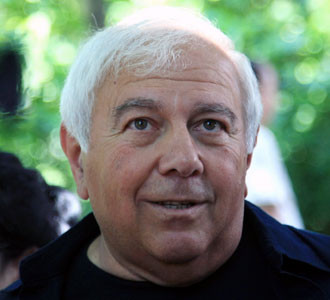 The Slatina Neolithic Settlement is the earliest human settlement on the territory of the Bulgarian capital city Sofia. It was settled in the Early Neolithic by farmers and stock-breeders who came from Asia Minor on the territory of Southeast Europe- the Eastern Balkans, Thessaly and the Central Balkans at the end of the 7th and the beginning of the 6th century BC. Later, they gradually advanced from the south and southeast to the north deeper into Europe. We used the radiocarbon dating method to determine the age of the Neolithic settlement. This method is very precise and determines the age of the object with a deviation of a maximum of 5 years, Professor Vasil Nikolov told Radio Bulgaria and specified:
The Slatina Neolithic Settlement is the earliest human settlement on the territory of the Bulgarian capital city Sofia. It was settled in the Early Neolithic by farmers and stock-breeders who came from Asia Minor on the territory of Southeast Europe- the Eastern Balkans, Thessaly and the Central Balkans at the end of the 7th and the beginning of the 6th century BC. Later, they gradually advanced from the south and southeast to the north deeper into Europe. We used the radiocarbon dating method to determine the age of the Neolithic settlement. This method is very precise and determines the age of the object with a deviation of a maximum of 5 years, Professor Vasil Nikolov told Radio Bulgaria and specified:
The Slatina Neolithic Settlement had a total territory of 20 acres. It was inhabited for over 500 years. Back then the ancient people used to move in different parts of this area, because their houses were built of wood and clay and lasted for a maximum of 60 to 70 years. The people usually burnt or buried their houses and then built their new house nearby.
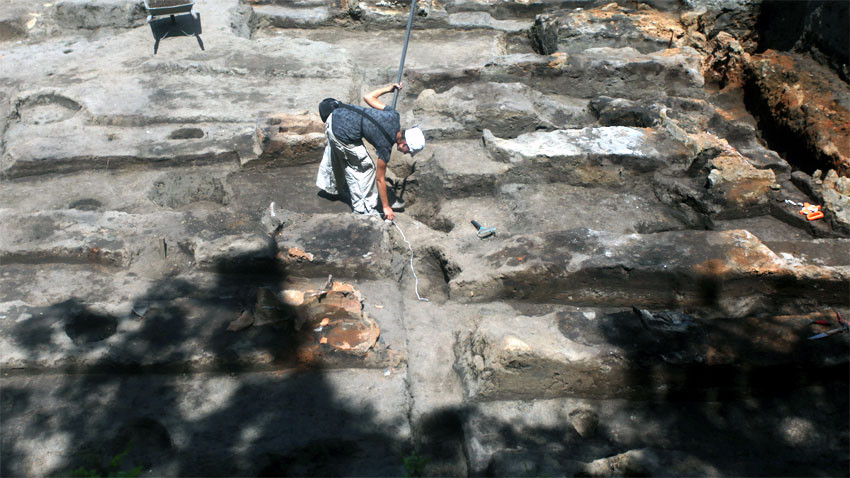
One of the ancient houses was studied in 1985. It was quite impressive in size- it had an area of 117 square meters. Later, archaeologists found a bigger house which has an area of 147 square meters. Currently the archaeologists are exploring a house which has an area of nearly 300 square meters.
These houses had several rooms, Professor Vasil Nikolov says. Usually each room was equipped with a domical furnace which was used for heating and cooking.
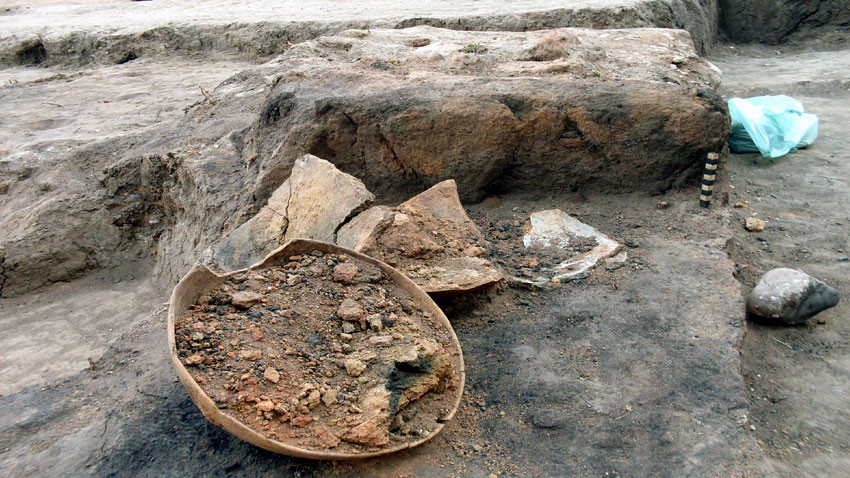
The ancient people also had granaries in their houses. They used stone hand mills, looms, wooden beds and other equipment. The larger buildings had fireplaces as well. The livestock of kept outside of the settlement. The houses were quite solid-they were made of wattle plastered with clay and had gable roofs.
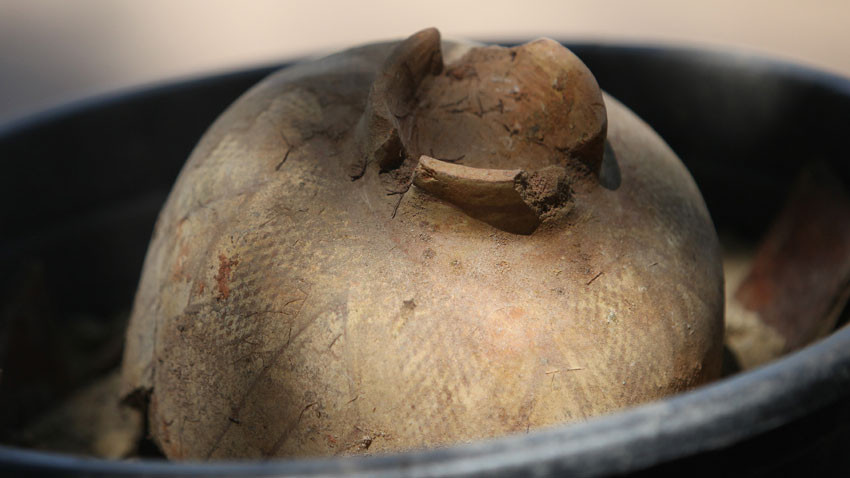
The people who inhabited the Slatina Neolithic Settlement had a very rich mythological system, Professor Nikolov says and adds:
The ceramic pot had a utilitarian function- it was used for cooking, but meanwhile reflected the thinking of the ancient people in the context of their religious and mythological system: a pot in which something is created. It was used for making food out of raw products, an act which belongs to civilization. It also shows that the ancient people gave a meaning to the transition from the wild to the civilization.
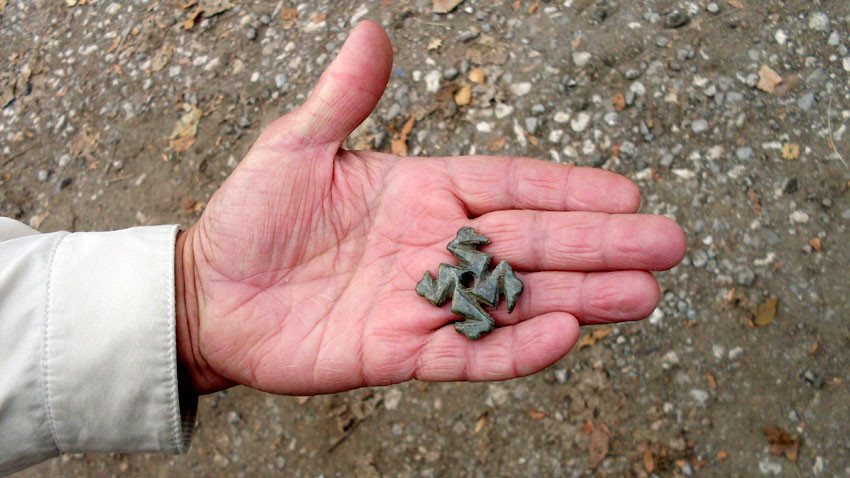
Another impressive find was discovered under one of the houses-a frog-like swastika made of nephrite. It was probably placed in a ritual pit in the foundations of the house.
We discovered many finds in the past two years, but three separate parallel moats which encompassed the whole Neolithic settlement attracted our attention the most. The number 3 apparently had a symbolical meaning to these people.
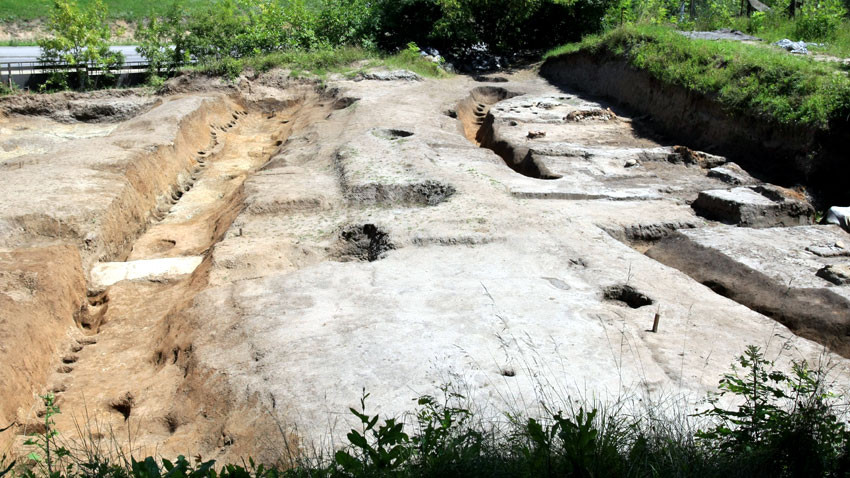
The external moat was used for rituals. It is full of broken ceramic pots and remains of sacrificial food. We found almost no remains of objects in the middle moat. However, we discovered traces of wooden fence which was built on its outer side which makes us believe that the second moat was not used for defense, but for various rituals. The inner moat is the narrowest one. We exposed holes in the ground that once supported a wooden construction. Such remains were found in several settlements in Southeast Europe only. It is very difficult to determine what this old construction was used for, Professor Nikolov says.
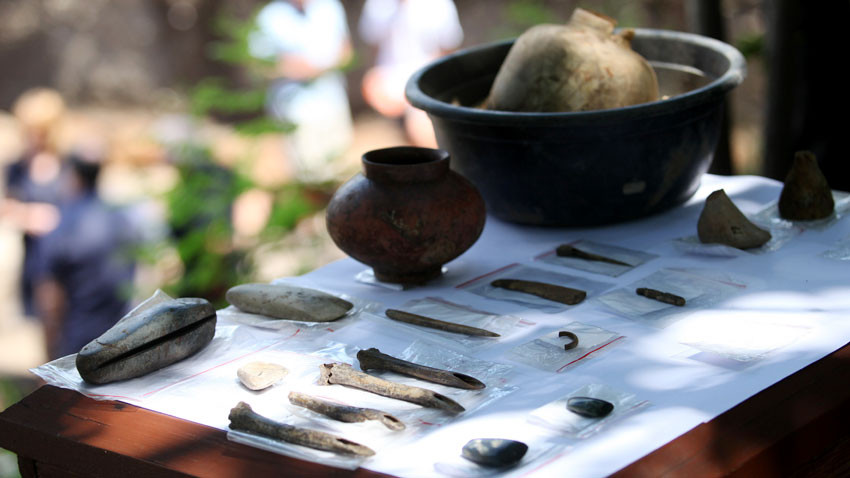
English version: Kostadin Atanasov
Photos: BGNES and archivePriest Lyubomir Bratoev is a direct participant in the events of t he founding of the Bulgarian Orthodox Church community in Berlin . He came to the capital of East Germany in the late 1980s as a doctoral student. And, like a typical Orthodox Christian..
After nearly 35 years, the Bulgarian Orthodox Church Community in London has its own church in the central part of the British capital, in close proximity to the Bulgarian Embassy. There, in the prestigious Kensington district, next to Hyde Park and..
Meatfare Sunday in 2025 will be remembered as a major celebration for the Bulgarian Orthodox Church and the entire Bulgarian community in the United Kingdom. The "St. John of Rila" Orthodox Church, built with funds from the Bulgarian state and with..
Priest Lyubomir Bratoev is a direct participant in the events of t he founding of the Bulgarian Orthodox Church community in Berlin . He came to the..

+359 2 9336 661
